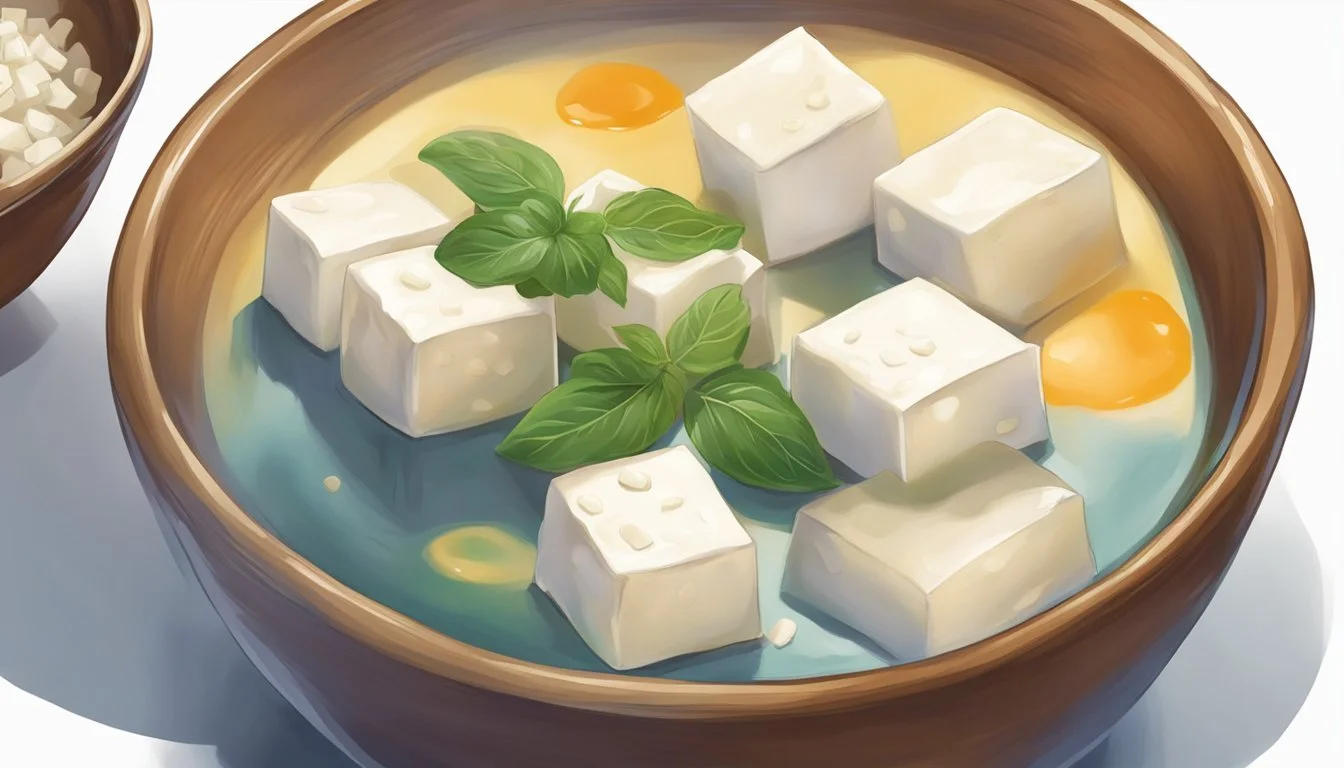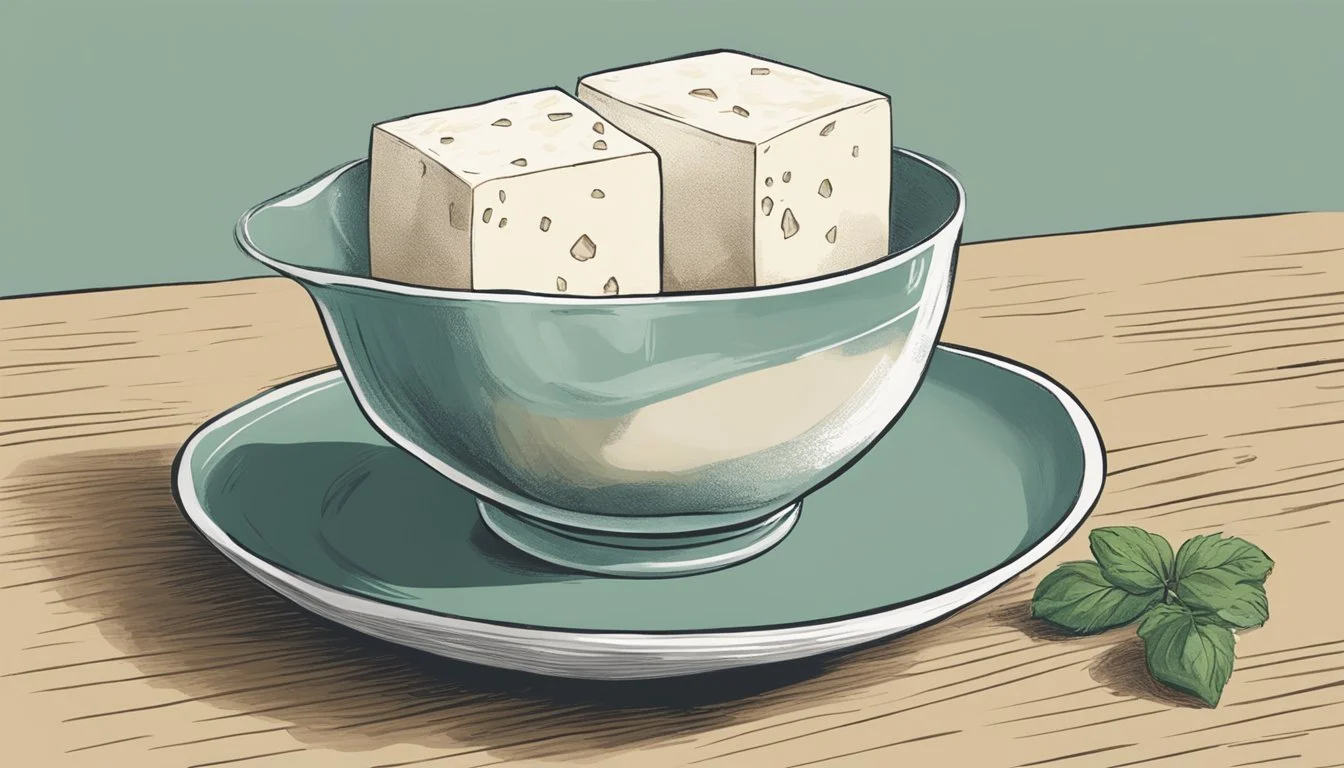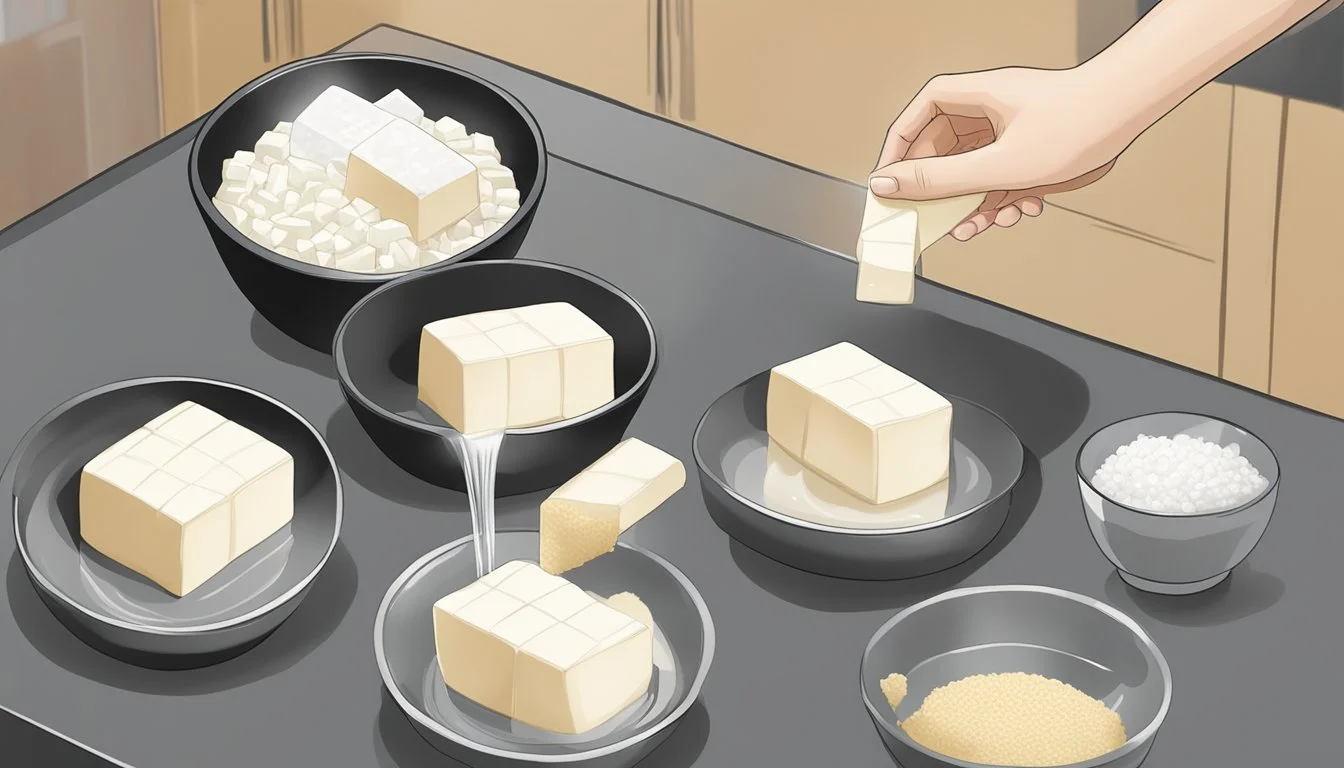How to Substitute Silken Tofu for Soft Tofu
A Seamless Kitchen Swap
Silken tofu and soft tofu are staples in many cuisines, serving not just as excellent protein sources but also as versatile ingredients in an array of dishes. Both types of tofu are derived from soy milk but have distinctive textures and culinary uses due to differences in their production processes. Silken tofu, known for its creamy, custard-like consistency, is a result of coagulating soy milk without curdling it completely while still in the container it's set in. This technique results in a delicate, smooth product that holds its shape better when minimal force is applied during handling.
On the other hand, soft tofu is slightly firmer than silken tofu and has a somewhat grainy texture. It is made by coagulating soy milk and then pressing the curds just enough to eliminate some of the water content. Because of these differences, careful consideration is needed when substituting silken tofu for soft tofu. The substitution could affect the texture and structural integrity of dishes such as stir-fries, where soft tofu's firmer texture is often desired to withstand the cooking process.
For cooks looking to replace soft tofu with silken tofu, it's important to understand how the silken variant's higher water content and smoother texture can alter the dish. One must account for these factors, especially in recipes that rely on tofu as a primary ingredient. However, with the right adjustments, silken tofu can still provide a creamy consistency and absorb flavors well, making it a useful alternative in various recipes requiring a softer, more blendable form of tofu.
Understanding Tofu Varieties
Tofu, derived from soybeans, comes in various textures and firmness levels, each suitable for different culinary applications. An understanding of the characteristics and nutritional content of tofu varieties, especially silken and soft, is crucial for substitutions in recipes.
Soft and Silken Tofu Differences
Soft Tofu:
Texture: Slightly grainy, less smooth than silken tofu.
Water Content: Higher than firmer varieties but lower than silken tofu.
Uses: Suitable for soups and stews.
Silken Tofu:
Texture: Creamy, jelly-like, and smooth.
Water Content: Contains the highest water content, as it is not pressed.
Uses: Ideal for smoothies, creamy sauces, and desserts.
Nutritional Content and Health Benefits
Both soft and silken tofu are rich sources of plant-based protein, making them a staple in vegetarian and vegan diets. They are dairy-free and gluten-free, catering to various dietary preferences and restrictions.
Protein: Essential for muscle repair and building.
Fiber: Beneficial for digestive health.
Nutrient Soft Tofu (per 100g) Silken Tofu (per 100g) Protein 7 grams 6 grams Fiber 0.5 grams 0.5 grams Fat 3.5 grams 2 grams Carbohydrates 1.5 grams 2 grams
Both varieties provide essential amino acids and are considered complete proteins, supporting a well-rounded diet.
Selecting Tofu for Recipes
When preparing a dish, selecting the right type of tofu is crucial to achieve the desired texture and flavor. Understanding the characteristics of different tofus and their suitability for various dishes ensures culinary success.
Matching Tofu to Dish Types
Firm Tofu: Ideal for recipes requiring a hearty texture, firm tofu holds its shape well. It is best utilized in stir-fries or grilled dishes (What wine goes well with grilled dishes?) where it can absorb flavors without falling apart.
Soups and Salads: Soft tofu or silken tofu are recommended for gentle cooking methods or where a delicate texture is preferred. For instance, in a light broth-based soup or a simple salad, these softer varieties blend seamlessly without overwhelming the dish.
Dessert: Silken tofu is particularly suited for desserts due to its smooth texture and mild flavor. It can be incorporated into mousses or blended into creams as a dairy substitute.
_Note: When substituting silken tofu for soft tofu, be mindful that silken tofu is likely to create a creamier and more gelatinous result, affecting the final texture of the dish.
Tofu in Different Cuisines
Chinese Cuisine: Firm tofu is often used in robust recipes such as Mapo Tofu or deep-fried for a crispy exterior. Silken tofu, on the other hand, stars in softer dishes like Douhua (tofu pudding).
Japanese Cuisine: Silken tofu shines in Japanese dishes, serving as a delicate addition to Miso Soup or cold in dishes like Hiya Yakko.
Korean Cuisine: Firm tofu can be found in stews like Sundubu-jjigae, providing a satisfying chew amidst spicy and bold flavors.
Each cuisine values different textures and firmness levels of tofu to complement its traditional flavor profiles and cooking techniques. In substitution, chefs must consider these cultural nuances to maintain the integrity of the dish.
Preparation Techniques
When substituting soft tofu for silken tofu, it's pivotal to manipulate the tofu's texture and firmness to achieve the consistency required for the dish at hand. This can be done through draining, pressing, and employing specific cooking methods.
Draining and Pressing
To mimic the delicate texture of silken tofu, one must first address the extra water content typically found in soft tofu. Draining is the initial step; it involves leaving the tofu to sit and allowing gravity to pull excess water out. This step can be expedited by wrapping the tofu in a clean kitchen towel or paper towels and placing a light weight on top.
Pressing soft tofu transforms its consistency, bringing it closer to that of silken tofu. The task is subtle, as applying too much pressure can result in a texture that is too firm. A balanced approach requires a consistent, gentle pressure evenly distributed across the surface for about 15-30 minutes, being careful not to compromise the tofu’s structure.
Cooking Methods
Once the tofu’s firmness is adequately adjusted, cooking methods come into play. Here are specific techniques and how they relate to tofu:
Steam: Steaming soft tofu is a quick, gentle way to heat it without further losing its moisture, which helps in maintaining a soft, silky texture.
Microwave: A brief stint in the microwave can warm tofu evenly. This method should be done in short intervals to prevent the tofu from toughening.
Poach: Poaching involves cooking the tofu at a low temperature in a flavorful liquid, enhancing its softness and infusing it with the poaching liquid's taste.
To carefully cook soft tofu and retain its delicate nature, each technique must be executed with precision. The microwave and steaming methods should be limited to a few minutes, while poaching necessitates a vigilant, low-heat approach.
Substituting Silken for Soft Tofu
When looking to substitute silken tofu for soft tofu, it's essential to understand the differences in texture and moisture content. Proper substitution can ensure that dishes retain their intended flavor and consistency.
Substitution Guidelines
Firmness: Silken tofu is less firm than soft tofu; however, one can use firm silken tofu as a closer match to soft tofu.
Consistency: Silken tofu has a creamier and more jelly-like consistency compared to the more granular texture of soft tofu.
When replacing soft tofu with silken tofu in a recipe, one should be mindful of these distinctions. A direct substitution is possible in recipes where the fine texture of tofu is not critical. However, in cases where texture plays a key role, such as in stir-fries or grilled dishes, using silken tofu may not yield the desired results due to its delicate nature.
Adjusting for Texture and Moisture
Moisture Content: Silken tofu contains more water than soft tofu. Draining excess water may be necessary to achieve a closer consistency to soft tofu.
Recipe Adjustments:
For soups and sauces, silken tofu blends smoothly and requires no adjustments.
In baked goods or desserts, silken tofu can be used to add creaminess without significant textural differences.
For stir-fries or dishes that need the tofu to hold its shape, consider pressing silken tofu to eliminate some of the water and firm it up slightly, or choose another substitute.
To adapt silken tofu for use in place of soft tofu, consider the desired firmness and moisture requirements of the dish. It may not always be possible to replicate the exact properties of soft tofu with silken tofu, but these adjustments can help achieve a similar result.
Enhancing Flavor and Nutrition
When substituting silken tofu for soft tofu, one must consider both the flavor profile and nutritional content to achieve a balanced and appealing dish.
Choosing Complementary Ingredients
For optimal flavor, the selection of ingredients to accompany silken tofu should amplify its subtle taste without overpowering it. Soy sauce and garlic provide a savory depth, while a drizzle of sesame oil can offer a rich, nutty aroma. To add a kick of heat, finely chopped chili pepper can be sparingly used. It’s also beneficial to integrate seeds and nuts, such as crushed peanuts or sesame seeds, for texture and additional flavor complexities.
Savory Enhancers: Soy sauce, garlic
Rich Aromatics: Sesame oil, nuts
Heat Elements: Chili pepper
Texture Variation: Seeds, nuts
Incorporating Proteins and Fibers
Silken tofu itself is a source of protein but may be complemented with other protein-rich ingredients like lentils and a variety of grains to create a more robust nutritional profile. Chickpea flour can serve as a thickening agent in dishes while also providing protein and fiber. Including seeds such as chia or flax can boost both protein and fiber content, alongside delivering healthy fats.
Protein Sources: Lentils, chickpea flour, grains
Fiber-Rich Additions: Chickpea flour, seeds
Utilizing these ingredients not only enhances the culinary experience but also contributes to a nutritionally enriched meal.
Alternative Tofu Substitutes
When seeking alternatives to silken or soft tofu, it's important to consider the textural and flavor profiles necessary for the dish at hand. The substitutes range from plant-based options ideal for vegan and vegetarian recipes to dairy-based choices which might be more suitable for those without soy or nut allergies.
Plant-Based Alternatives
Chickpea Flour: For a soy-free, gluten-free option, chickpea flour mixed with a plant-based liquid such as almond milk can mimic the texture and protein content of tofu. This mixture is excellent for scrambles or omelets.
Tempeh: Made from fermented soybeans, tempeh has a grainy texture and a nutty flavor. It works well in stir-fries, salads, and as a protein-rich appetizer.
Seitan: (What wine goes well with seitan?) Also known as wheat meat, seitan is a popular protein source for those on a vegetarian diet. It offers a chewy, meat-like texture and is versatile enough for a variety of recipes.
Red Lentils: Creating a tofu-like product from red lentils involves cooking protein-rich lentil milk and adding a natural coagulant, resulting in curds that can replace soft tofu.
Other Substitution Options
Dairy-based Substitutes: Paneer or halloumi can be used as a substitute for tofu, particularly in dishes that require a firmer texture. Both are dairy products and suitable for vegetarians but not for a vegan or dairy-free diet.
Nut-based Creams: Almond milk can be thickened to use as a soft tofu substitute in cream-based recipes. Similarly, cashews blended with water can provide a rich consistency for sauces and desserts.
Coconut Cream: For sweet dishes, coconut cream offers the creamy texture of silken tofu and adds a tropical flavor profile.
Apple Sauce: In baked goods, apple sauce can provide moisture and binding properties similar to tofu, making it an excellent vegan and soy-free alternative.
Serving and Presentation
When substituting silken tofu for soft tofu, attention to serving and presentation enhances the dining experience. Whether it's part of a salad, appetizer, or main dish, presenting tofu appealingly can make a significant difference.
Dishing and Garnishing Tips
After preparing silken tofu as a substitute for soft tofu, it should be presented with care. A simple but effective way to serve it is on a flat serving plate to maintain its delicate structure. For salads or as an appetizer, one might cut the tofu into cubes and gently toss it with other ingredients. A garnish of thinly sliced scallion adds a pop of color and a hint of sharpness to the dish.
For hot dishes, sesame oil drizzled over the tofu can enhance its natural flavors and add a beautiful sheen for presentation. As a snack or dessert, one might consider cutting the tofu into more substantial blocks to highlight its presence in the dish. When serving, be mindful of the tofu's consistency, as silken tofu is more fragile and will not hold up to rough handling.
Tofu as a Centerpiece
Silken tofu, with its creamy texture, can take center stage in a dish and act as the primary element. When using it in place of soft tofu, consider allowing the tofu to be the star of the show, such as a silken tofu and rice bowl. Here, the tofu can be placed atop a bed of seasoned rice, making it the focal point of both flavor and presentation.
In dessert presentations, silken tofu pairs wonderfully with a variety of syrups and garnishes, such as fruit or chocolate shavings. It's beneficial to use contrast in your presentation — for instance, a dark chocolate sauce drizzled over the pale tofu creates an eye-catching and tempting dessert presentation. Whether used in savory or sweet applications, ensuring that the tofu's texture and shape are preserved during plating will make for a more appealing and satisfying dish.
Storing Tofu
Proper storage is essential to maintain the texture and firmness of both silken and soft tofu. It ensures the tofu remains safe to eat and retains its desired consistency for various culinary uses.
Refrigeration Tips
When refrigerating silken tofu or soft tofu, one should place it in an airtight container. If tofu comes in aseptic boxes, refrigeration isn't necessary until the box is opened. After opening, however, the tofu must be stored in the refrigerator.
For unopened tofu: Keep it in its original aseptic packaging at room temperature and away from direct sunlight.
For opened tofu:
Transfer to a clean airtight container.
If submerged in water, change the water daily to preserve freshness.
Extending Shelf Life
Extending the shelf life of silken or soft tofu involves careful handling and appropriate storage conditions.
In the refrigerator:
Store tofu in its original liquid, exchanging it with fresh water daily.
Keep temperatures at a consistent cool to prevent bacterial growth.
In the freezer:
Wrap tofu tightly to prevent freezer burn and texture alteration.
Store at 0°F (-18°C) or below for optimal freezing conditions.
Use frozen tofu within a few months to ensure quality remains.
Tofu and Vegan Diet
Tofu is a cornerstone in vegan cuisine owing to its versatility, high protein content, and ability to act as a meat and dairy substitute. It's one of the most prevalent sources of plant-based protein available.
Incorporating Tofu in Vegan Meals
Tofu seamlessly fits into a wide array of vegan recipes due to its neutral flavor and customizable texture. Silken tofu, with its soft and creamy consistency, is often used in dairy-free desserts, smoothies, dips, and as a thickener in vegan soups. As a dairy-free alternative, it can replicate the silkiness typically achieved with creams and eggs.
Smoothies & Desserts: Blend silken tofu for a protein-rich, creamy base.
Soups & Sauces: Use pureed silken tofu as a thickening agent.
Comparing Plant Proteins
When it comes to vegan diets, diversifying protein sources is crucial. Tofu, being protein-rich and dairy-free, stands as a viable meat substitute and complements other plant-based proteins.
Protein Source Protein Content Characteristics Tofu High Versatile, mild flavor, various textures Tempeh Higher Firmer texture, nuttier flavor Seitan Variable Meat-like texture, wheat-based Legumes Moderate Includes beans, lentils, and peas
Tofu not only provides a substantial amount of protein but also contains all nine essential amino acids, making it a complete protein like that found in animal products. This feature is especially beneficial in a vegan diet, which excludes animal-derived ingredients.









